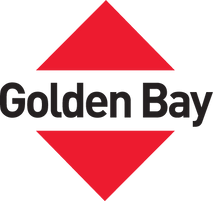The Inaugural Concrete NZ Nauhria Industry Awards
Concrete NZ is thrilled to announce it will be hosting its first-ever Concrete Industry Awards at the Royal New Zealand Yacht Squadron on Thursday 23 March 2023.
The Concrete NZ Nauhria Industry Awards are outwards facing, focussing on project and/or initiatives that appeal to clients and stakeholders outside of the concrete industry, as well as Concrete NZ members.
The Concrete NZ Nauhria Industry Awards celebrate exceptional projects and initiatives that showcase concrete design, construction, rehabilitation and research across the concrete industry and wider construction sector.
Showcase your contribution to Industry excellence in concrete, celebrate your successes with your peers, standout from your competitors and be recognized as an exemplary leader in New Zealand’s wider concrete industry.
WHY ENTER?
- To acknowledge all the professionals who made the project come-to-life.
- Demonstrate the project’s quality to the construction sector and beyond.
- Showcase the project team’s expertise and commitment to potential clients.
- Celebrate with concrete industry and construction sector peers at the Awards Gala – an evening not to be missed.
- Let’s celebrate the collaboration and innovation of the entire project team.
AWARD CATEGORIES

This is the Concrete NZ Nauhria Industry Award’s top honour and recognises the overall winner of the eight category awards as outlined in this Guide.
The recipient of the Nauhria Premier Concrete Award is judged to exemplify outstanding achievement in the advancement of concrete design, construction, rehabilitation and research, supported by an uncompromising drive to contribute to New Zealand’s sustainable development and net zero carbon target

Introduced in 1998 as part of the (now superseded) New Zealand Concrete Society Awards, this category seeks to encourage and recognise closer collaboration between architecture and engineering.
Such collaboration involves the design disciplines working together, sharing knowledge, learning from each other, and, by that, designing a building informed by professional inputs and consensus.
The Monte Craven Award may be assigned to any construction project which displays a significant demonstration of functional suitability, aesthetic appeal, environmental sensitivity, architectural flair and/or is of such a form or shape that makes its execution in concrete outstanding. Museum of Waitangi.

Often unseen and unappreciated, New Zealand’s concrete infrastructure is critical to the nation’s prosperity and wellbeing, literally underpinning our transport network and three waters as well as offering protection against the impact of climate change.
This category award is presented to any project, including bridges, tunnels, wharves, dams, liquid retaining structures, sewage and water treatment plants and concrete roads, which through the exemplary use of concrete is judged to have advanced the development of New Zealand’s portfolio of critical infrastructure.

Along with the traditional medium and high-rise mixed-use commercial buildings, this category also includes increasingly large distribution and storage warehouses, the burgeoning retirement village sector as well as health care and retail/hospitality
All of which demand a range of technical requirements, such as posttensioning, floor surface regularity, vibration control and acoustic insulation which see concrete come in to its own.
This category awards shines the spotlight on commercial and industrial buildings which demonstrate impressive functional suitability, aesthetic appeal, environmental sensitivity and are of such a form or shape that makes their execution in concrete outstanding.

Landscape architecture sees environmental planning combine with design practice (including material selection) and skilled construction to enrich an outside space, enabling people and nature to connect.
This category award acknowledges the use of concrete in a landscaping situation and may include (but is not limited to) concrete paving, retaining walls and the use of coloured/decorative concrete or special concrete features.

While debate rages over whether the housing bubble has burst, New Zealanders’ love affair with their homes remains intense and passionate.
Multi-unit developments have grown in popularity to complement stand-alone bespoke designs, all of which benefit from concrete’s durability, thermal mass, fire resistance and architectural potential.
This category award honours residential buildings of which the primary construction material is in-situ or precast concrete, concrete masonry, or other cementitious substances. It is not limited to single dwellings, with entries for medium density housing given equal consideration.

Building or improving community facilities for entertainment or education is an important and popular way for a town, city or region to improve its cultural and social resources.
This category award celebrates concrete design and construction in realising public offerings such as libraries, museums, art galleries and skate parks, that are accessible, reflect diversity and encourage people to live and play together effortlessly.

As the push towards greater sustainability gathers pace, there is increasing pressure to repair, strengthen, refurbish, recycle and re-use all aspects of the built environment.
Concrete’s durability, longevity and adaptability means that it is ideally suited to this responsible design and construction approach.
This award category recognises achievements across repair (e.g., St Andrew’s on The Terrace in Wellington), seismic strengthening (e.g., Rose Chapel and Isaac House in Christchurch) and repurposing (e.g., Beca’s Wellington office), which demonstrate the resilience of concrete to help prolong a structure’s servicelife, sustain new loading requirements, preserve architectural heritage, as well as avoid the environmental impact of new builds.

Innovation in the construction sector is key to developing a competitive advantage. Destabilising former ways of thinking as a pathway to progress in New Zealand has been given increased urgency in the wake of seismic, climate change and pandemic induced socio-economic pressures.
Long term, whole-of-life perspectives and procurement practices for buildings and facilities are driving innovation across concrete materials, design and construction to create new opportunities, and to rethink traditional approaches and models.
This award category applauds those individuals, companies and educational institutions which have made a significant contribution to the understanding/ use of concrete as evidenced by design innovations, original technology, new production and delivery mechanisms, research output, technical publications and/or educational activity.

This is a legacy Award that celebrates the use of concrete in building and civil engineering structures more than 25 years old.
Concrete structures previously recognised with the Award are:
• The Beehive, Wellington
• Fairfield Bridge, Hamilton
• Grafton Bridge, Auckland
• Kapuawhara Viaduct (Napier-Gisborne Rail Line), Gisborne
• Ohakea Air Force Hangars, Ohakea
• St Mary of the Angels Church, Wellington
The Enduring Concrete Award is not open to general entry, rather a judging subcommittee select contenders and the eventual recipient from their collective knowledge and familiarity with New Zealand’s historic concrete structures.
They are assisted in their task by Geoffrey Thornton’s excellent books, particularly Concrete Construction in New Zealand 1850-1939, which highlights the pioneering use of concrete in New Zealand across the latter half of the 19th century and beginning of the 20th century.

